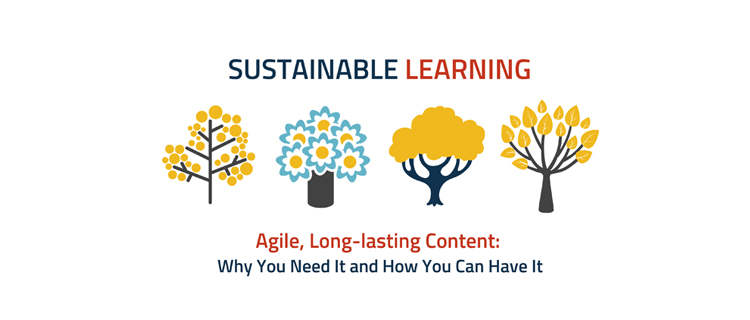The eLearning industry experienced a fundamental shift when interactive content came into its own almost 2 decades ago. By adding blended animations and rich interactives, content engaged users in ways it couldn’t before. Core content, which remains highly relevant even today, was designed and delivered in an interactive format, and the enhanced engagement led to better retention.
Over time, however, technological changes and the intricacies of handling new devices, screen sizes, operating systems and browsers hit the organizations, and courses created 20+years earlier started gathering dust or gradually were rendered inaccessible. While content remained fundamentally sound, its design and method of delivery now come across as dated.
Although it has retained its relevance, there are several key challenges that surround the use of legacy content.
1. Since most of this content was created in Flash, its declining popularity has undoubtedly affected eLearning. A 2016 Internet Usage Report by Statista was entitled “Google to Fade Out Flash in Chrome Browsers, The Web Is Turning Its Back On Flash”. It further added that, “Flash is widely regarded as a performance-hampering safety hazard and more and more companies are turning their back on what was once the industry standard for animated content. Slowly but surely, Flash’s footprint across the web is vanishing: In October 2016, just 10 percent of websites in the Alexa Top 10,000 used Flash, down from almost 50 percent five years ago.” While Adobe announced that Flash will no longer be supported by 2020, Microsoft will phase out support for Flash in Microsoft Edge and Internet Explorer ahead of this date.Owing to the constant upgrade of enterprise browsers, there are chances that the legacy Flash content will no longer being displayed/be compatible. Users will no longer have any ability to enable or run Flash since several major browsers have already stopped supporting Flash content and require additional plugins for displaying legacy content. The chances are that rest of the browsers too will follow the suit soon, and over time, even the plugins will be phased out.
2. The proliferation of devices has been rapid and in many cases Legacy content does not even load on newer devices. Pew Research Center’s study indicates that, “The vast majority of Americans – 95% – now own a cellphone of some kind. The share of Americans that own smartphones is now 77%, up from just 35% in 2011.” Flash content is already incompatible with iOS devices and it fails to work consistently on Android devices too. On devices that do support Flash content (here’s the list), rapid draining of the battery is a major issue.
3. Flash has the capability to deliver enhanced features but fails to fit the modern responsive and adaptive philosophy. The resizing and re-fitting of Flash content requires either a framework or additional coding specifications unlike the more progressive HTML, CSS, JavaScript, and Responsive Web Design etc.
Given the current scenario, what should enterprises with a large pool of legacy eLearning content do? What is the way around this challenge? And are there ways to put such content to good use? These questions and the challenges created by the progression of devices and associated technological changes, have paved the way for a newer, more flexible platform like HTML5. In contrast to the waning popularity of Flash, HTML5 has been gaining acceptance and brings with it a plethora of opportunities. HTML5 is used by 73.8% of all the websites whose markup language are known. From content design flexibility to deployment feasibility, HTML5 holds a lot of potential in store.
Migration of legacy eLearning content to HTML5 is the natural answer to all the challenges discussed above and gives new life to outdated content and interactions, through addition of newer interactions, advanced media formats etc. For the modern generation of learners, HTML5 based courses provide the learning model that they seek, which includes customization, personalization and self-paced learning.
The process, however, is usually long and involves a lot of heavy lifting in terms of content transformation. It involves content extraction which in itself gives a lot of flexibility towards content molding. After the conversion process, HTML5 based content can be designed to fit the learning requisites, and it provides added perks like:
In short, where Flash fails, HTML5 rises to the occasion. The challenges around legacy flash content can easily be resolved by converting it to HTML5. In addition, the approach can also help in future-proofing the learning content and in getting the best out of the existing legacy content.
So, have you been thinking about Flash to HTML5 conversion? If so, what are the reasons driving the change? Do share your thoughts.
DelphianLogic® is the Registered Trademark of DelphianLogic Technologies



